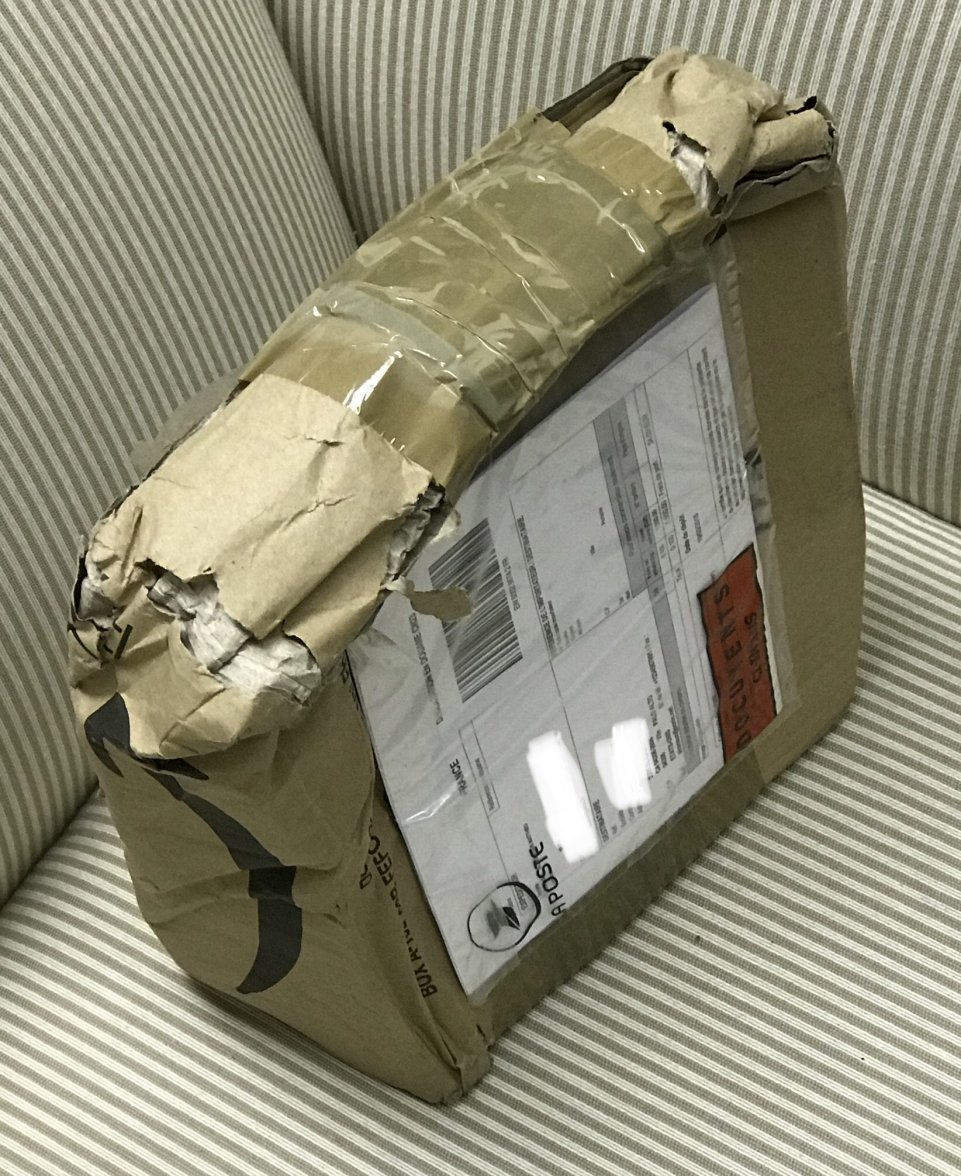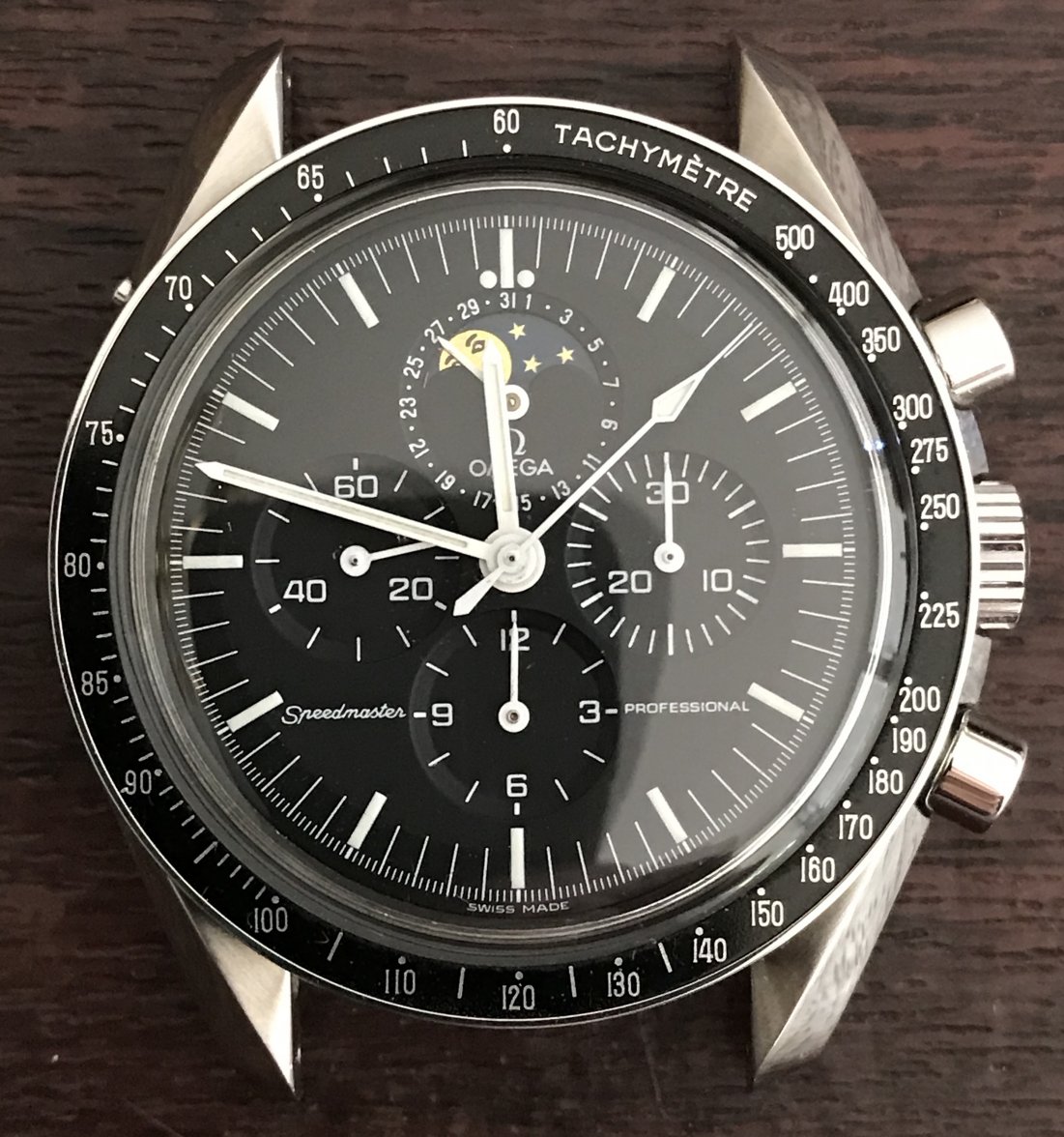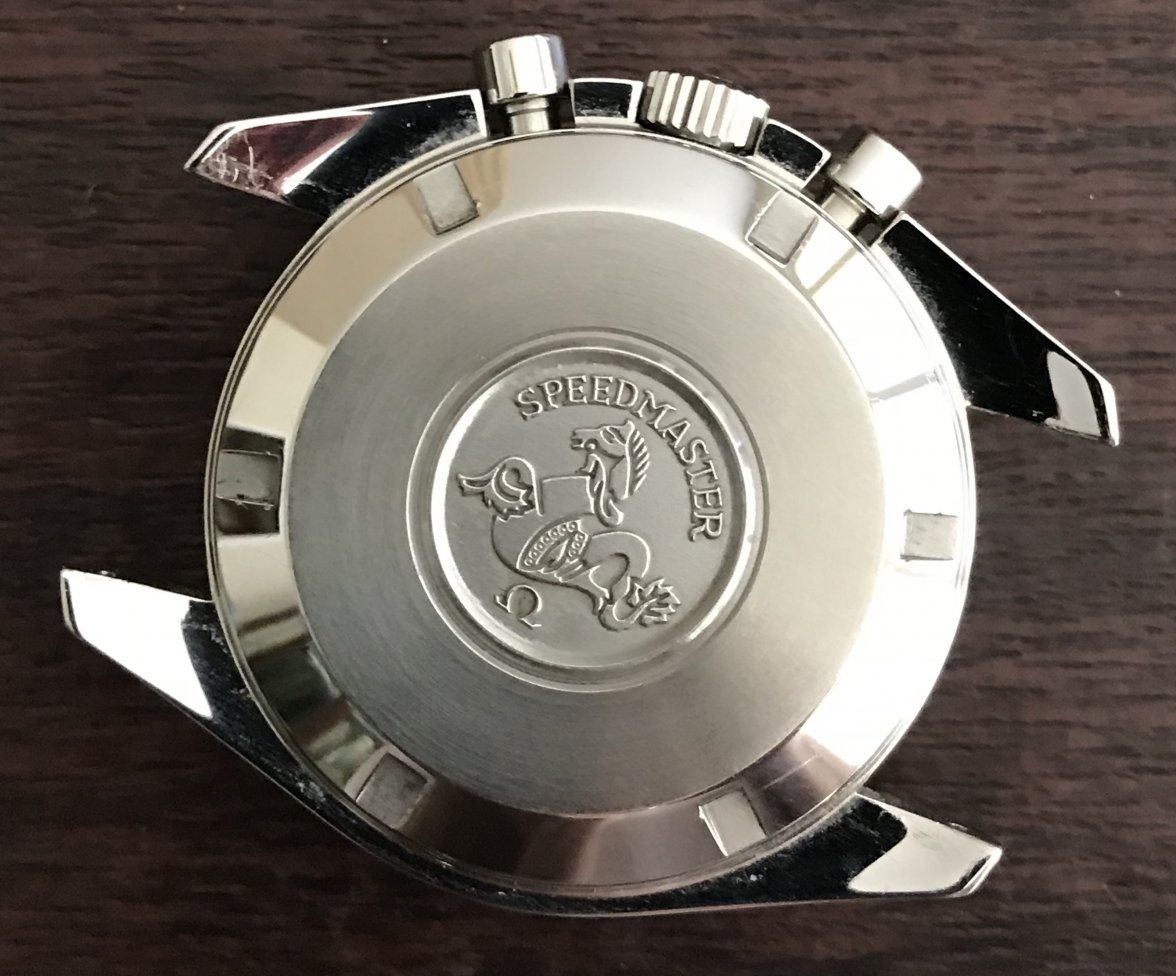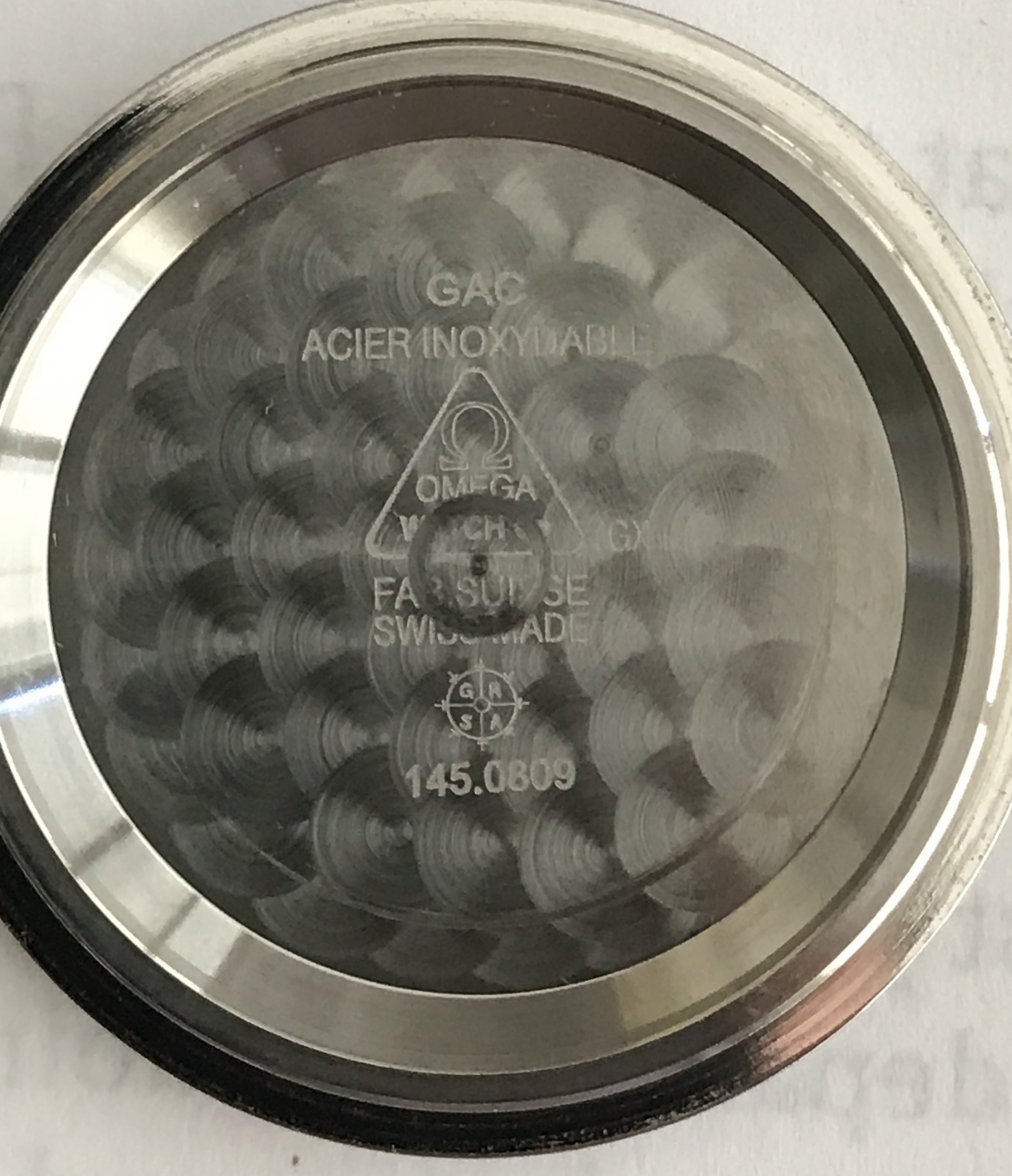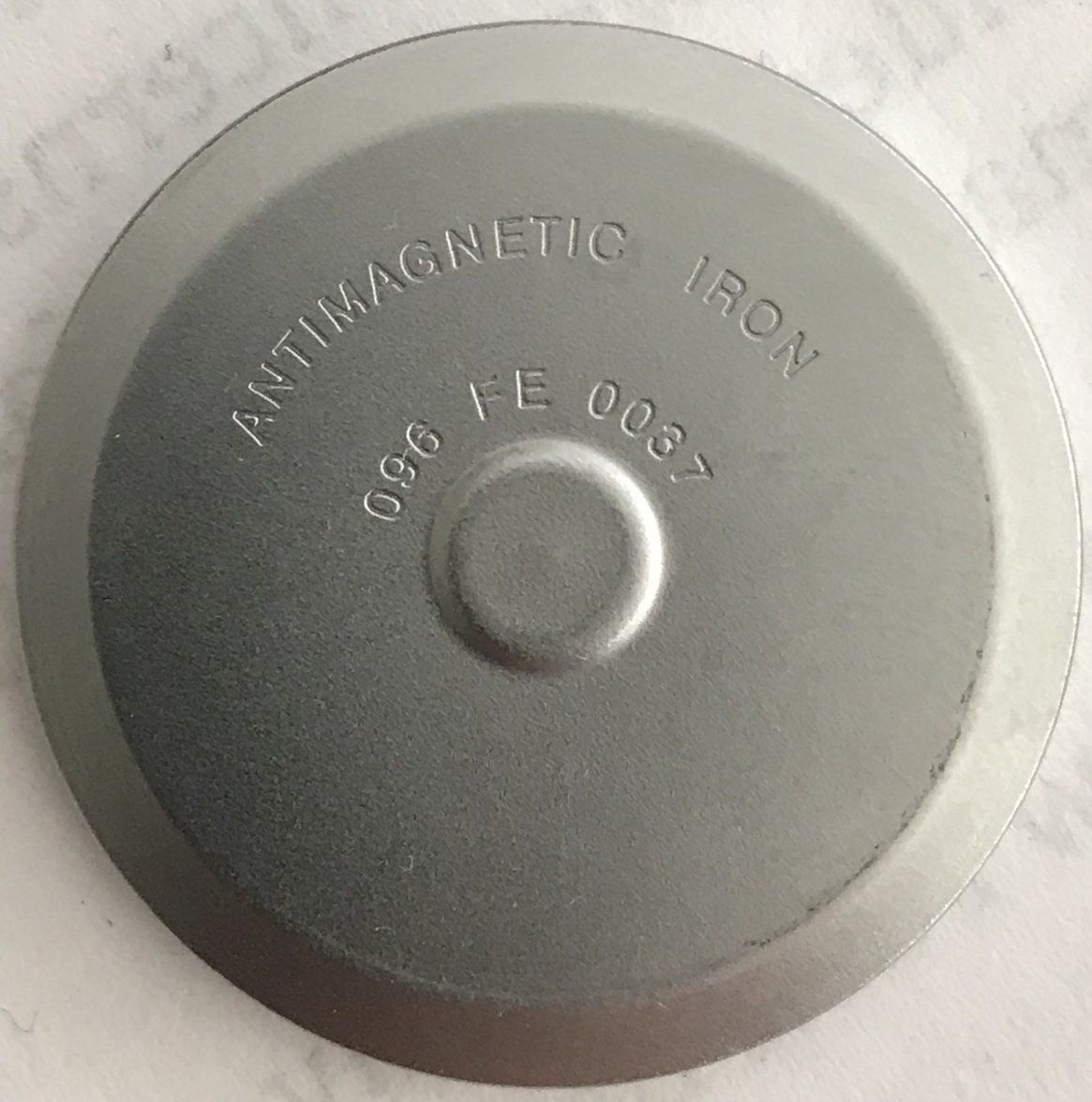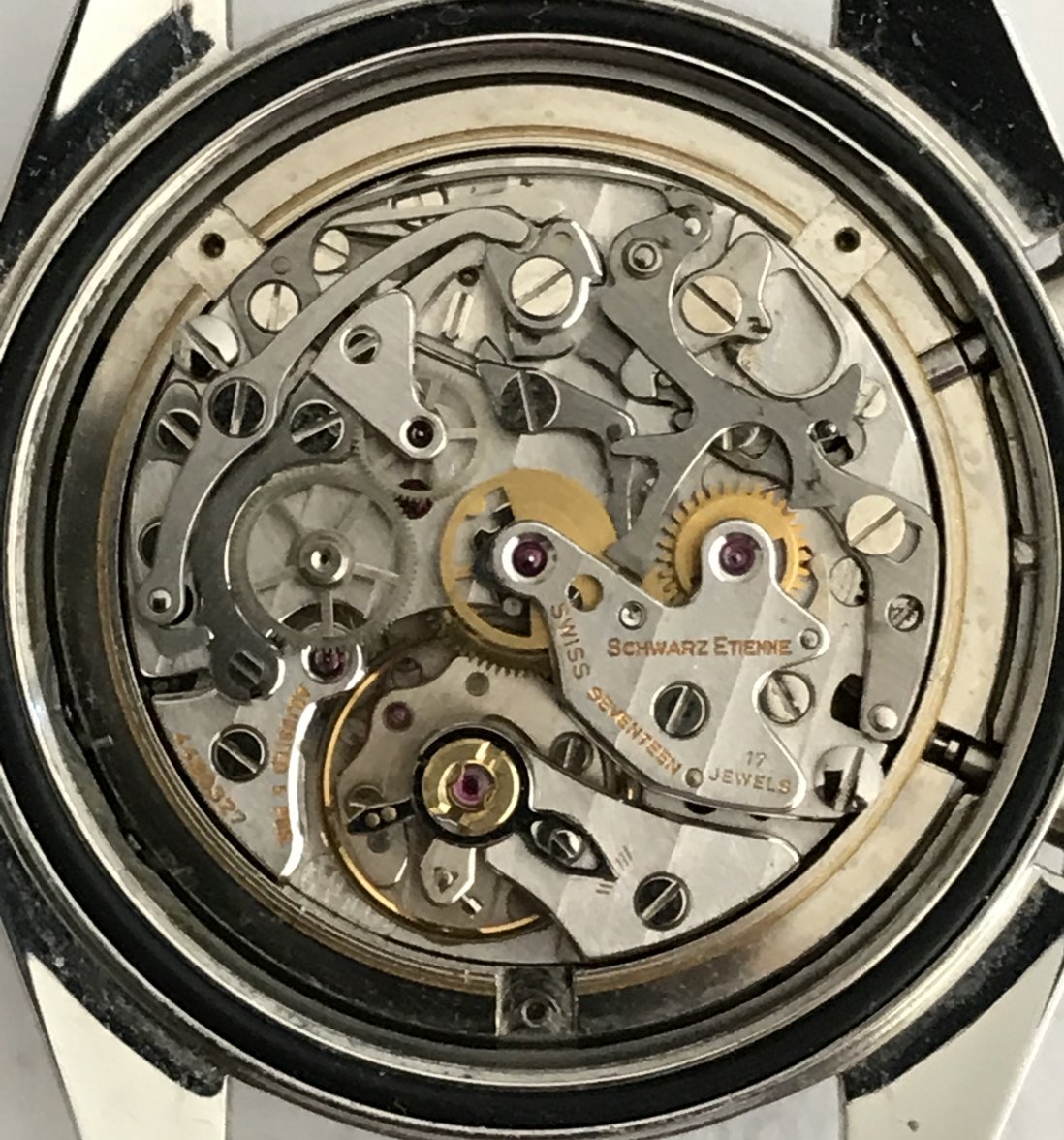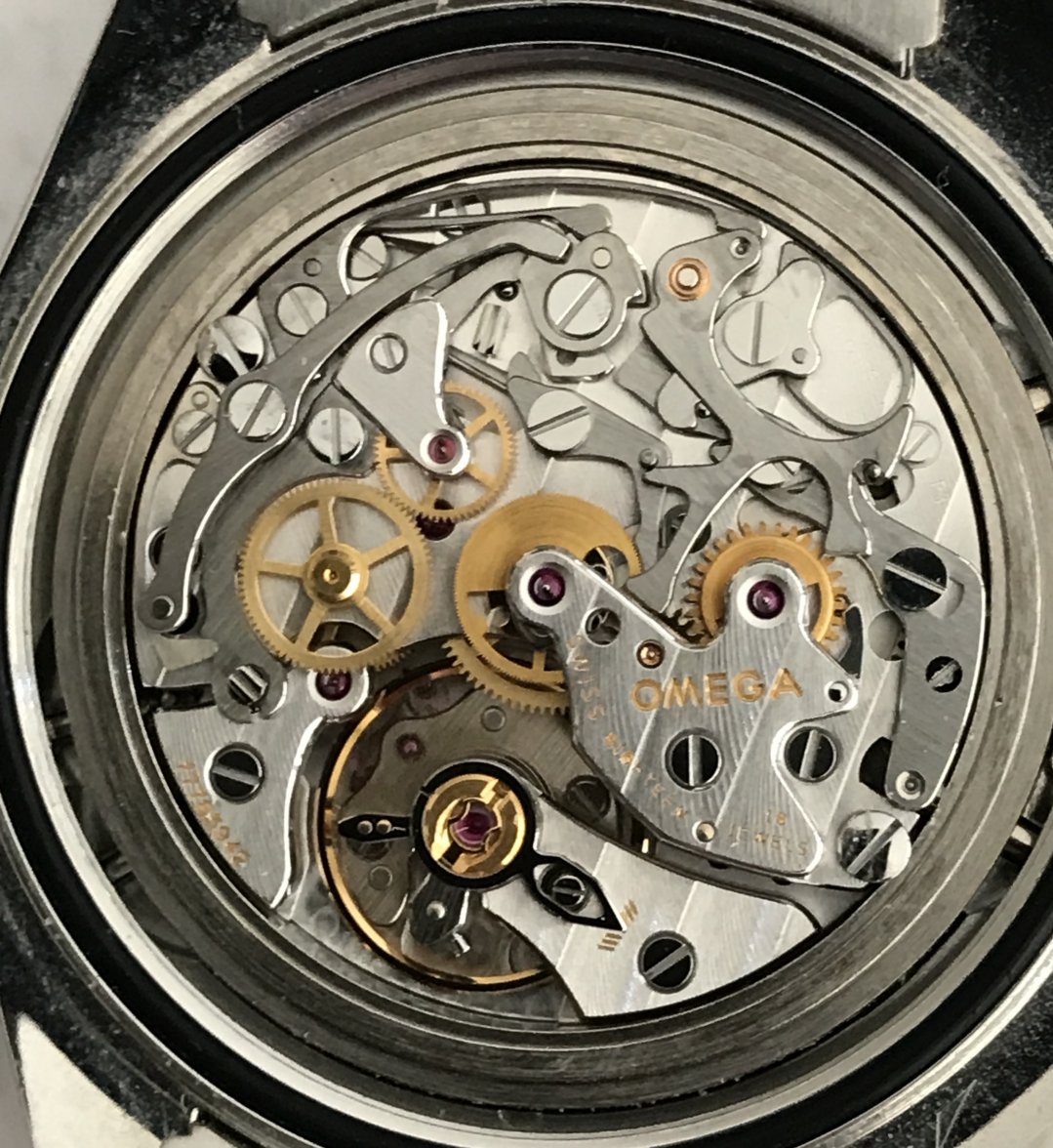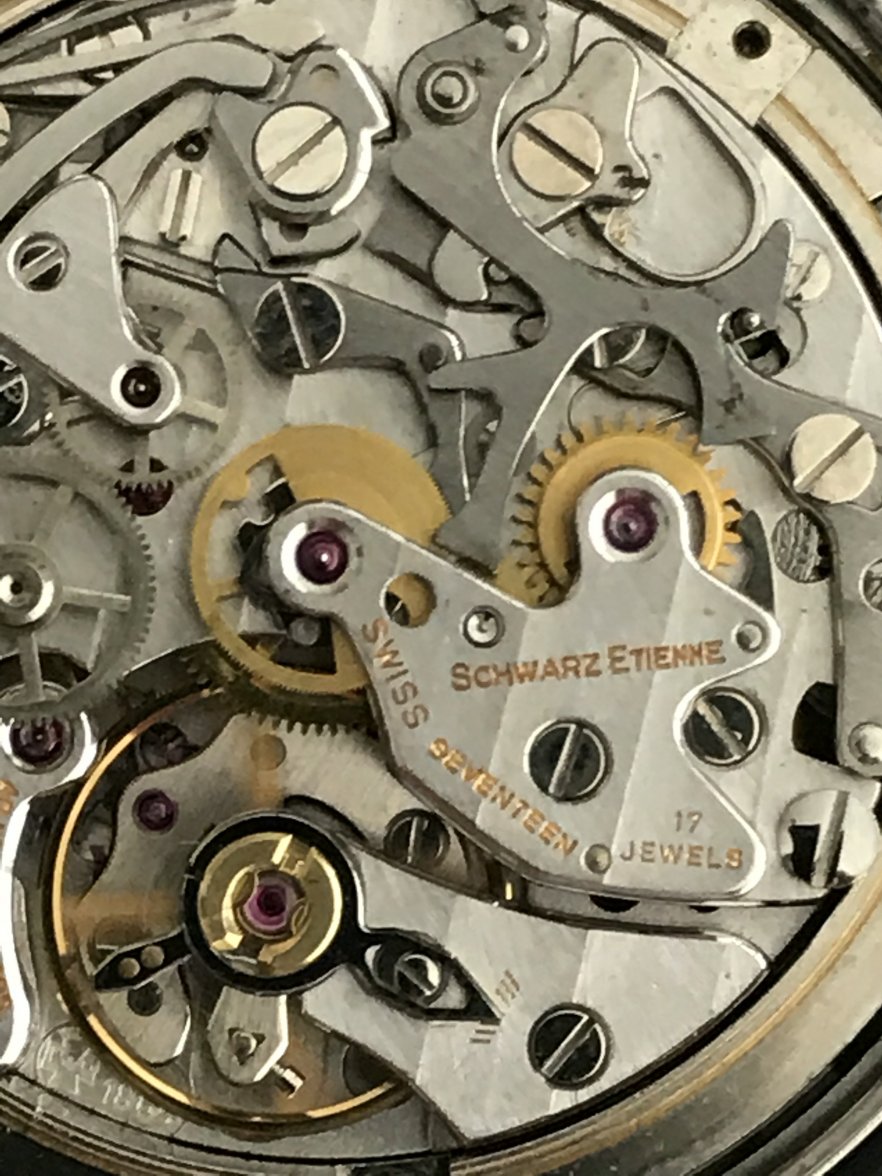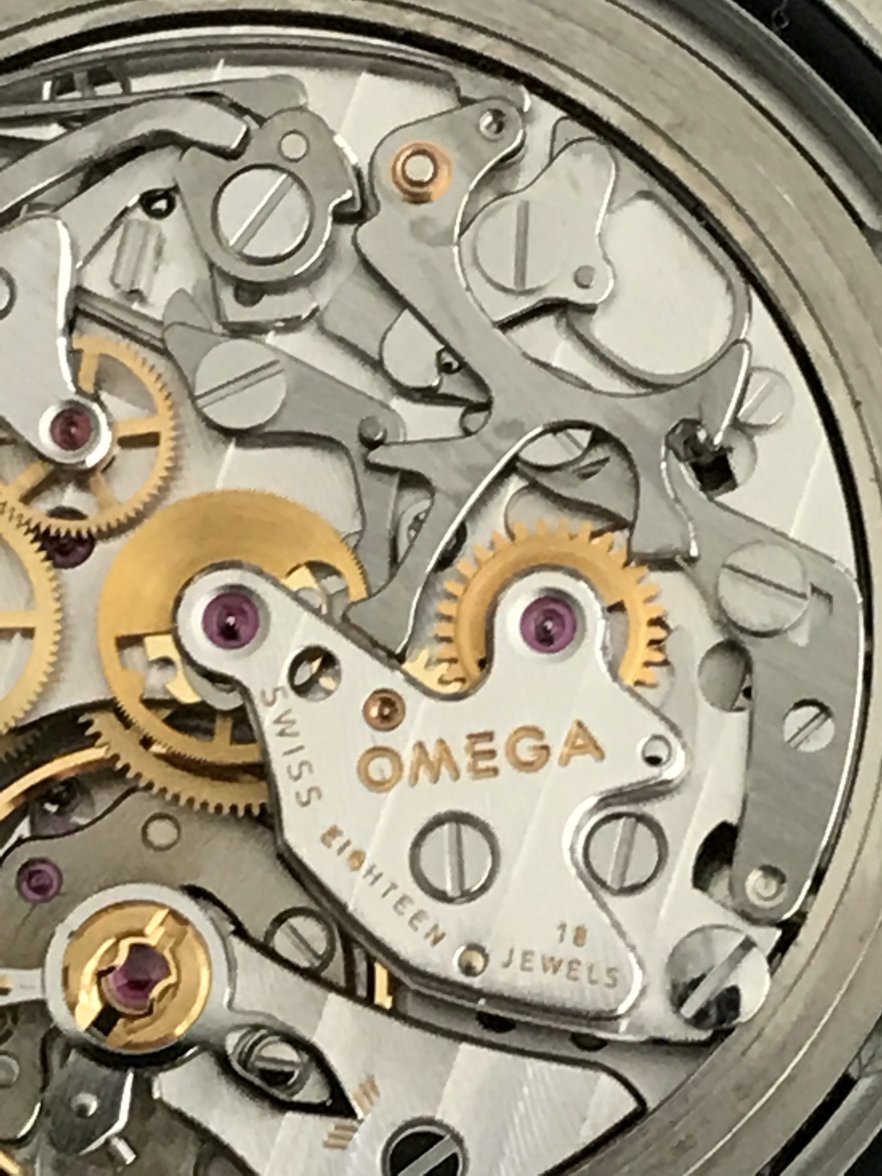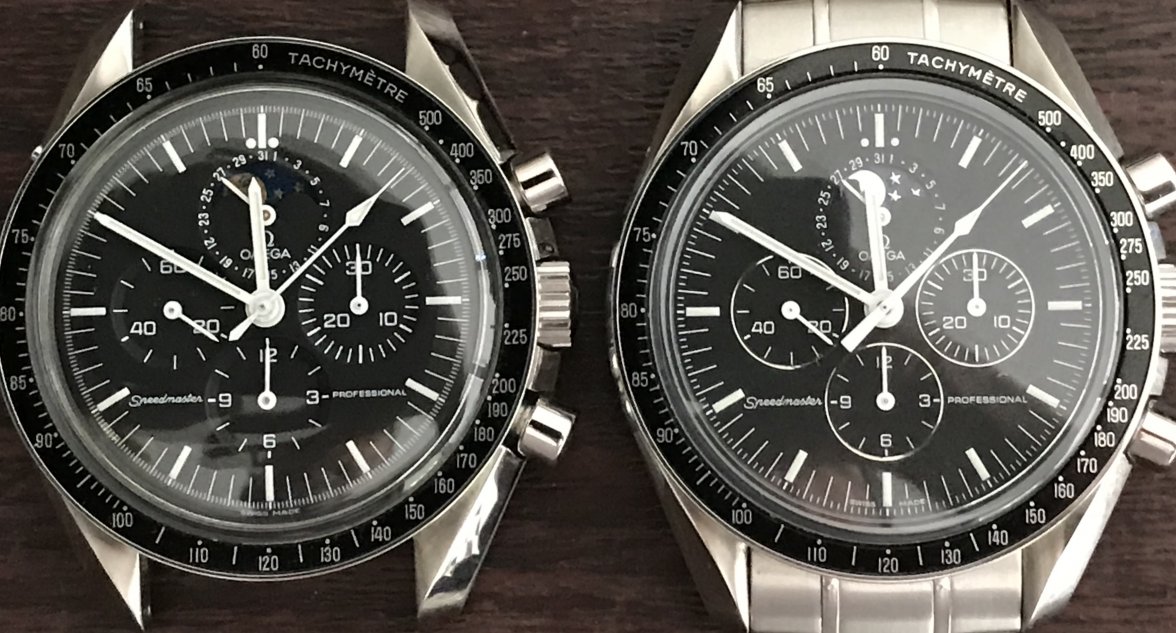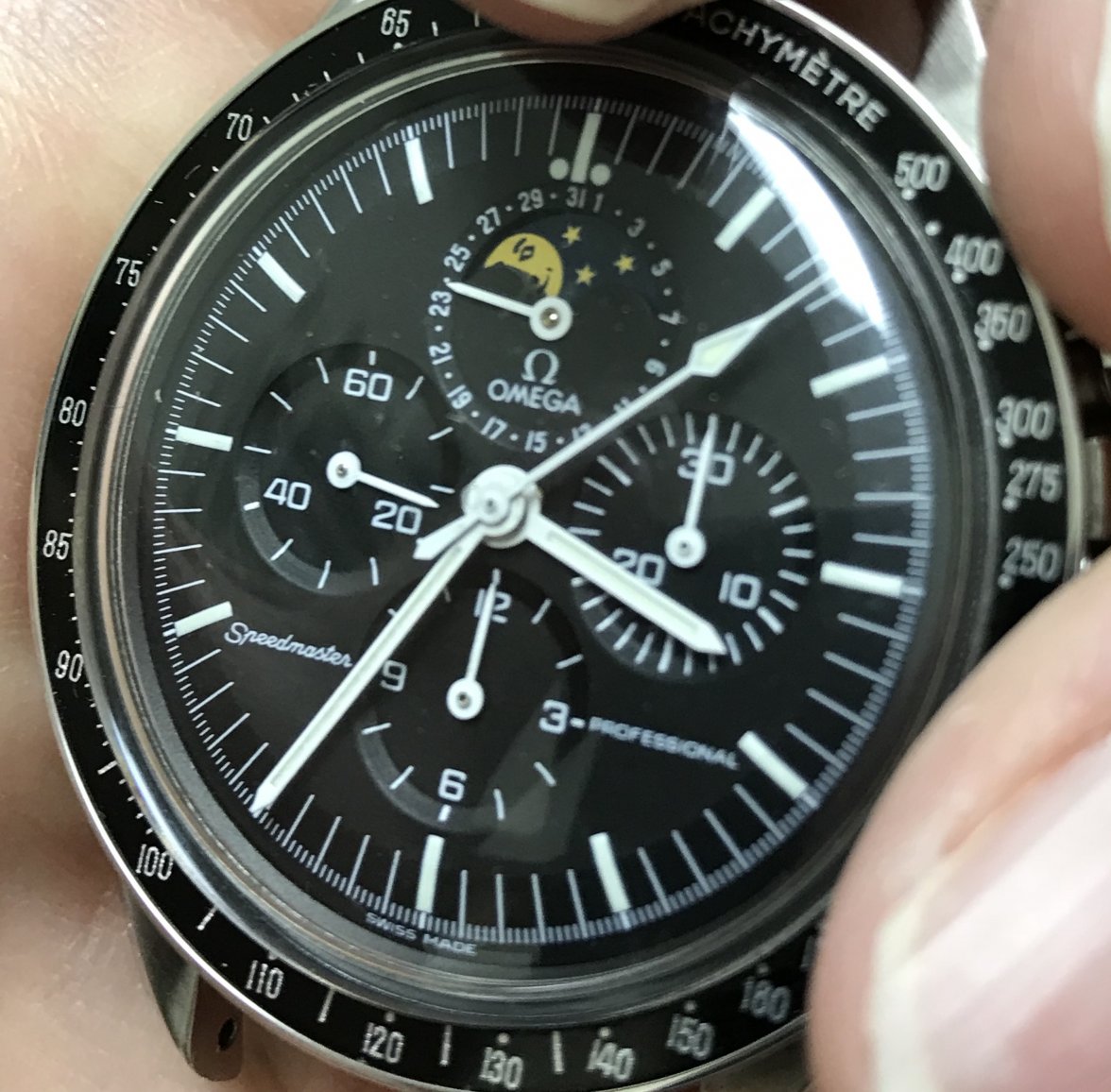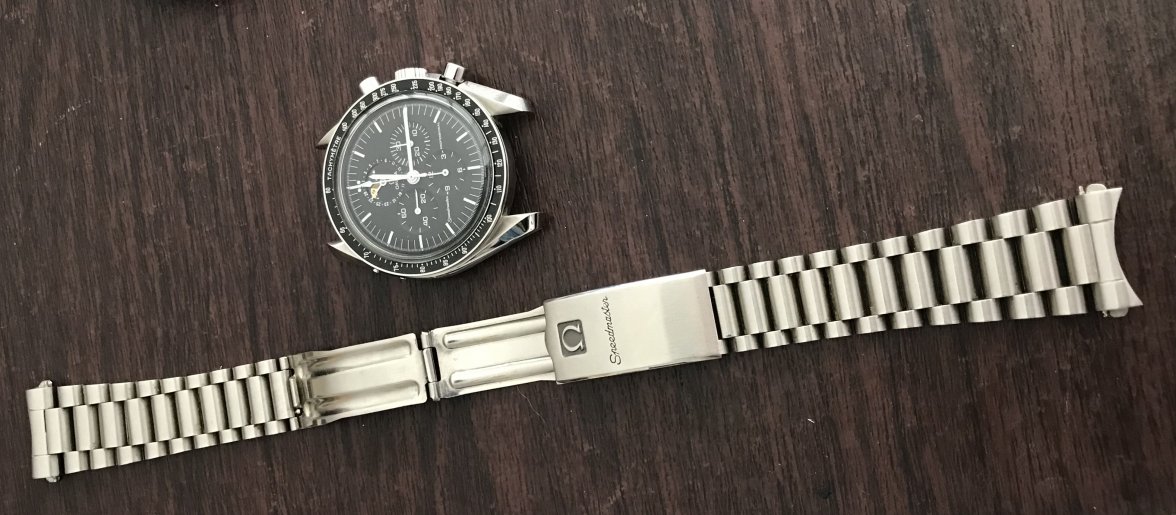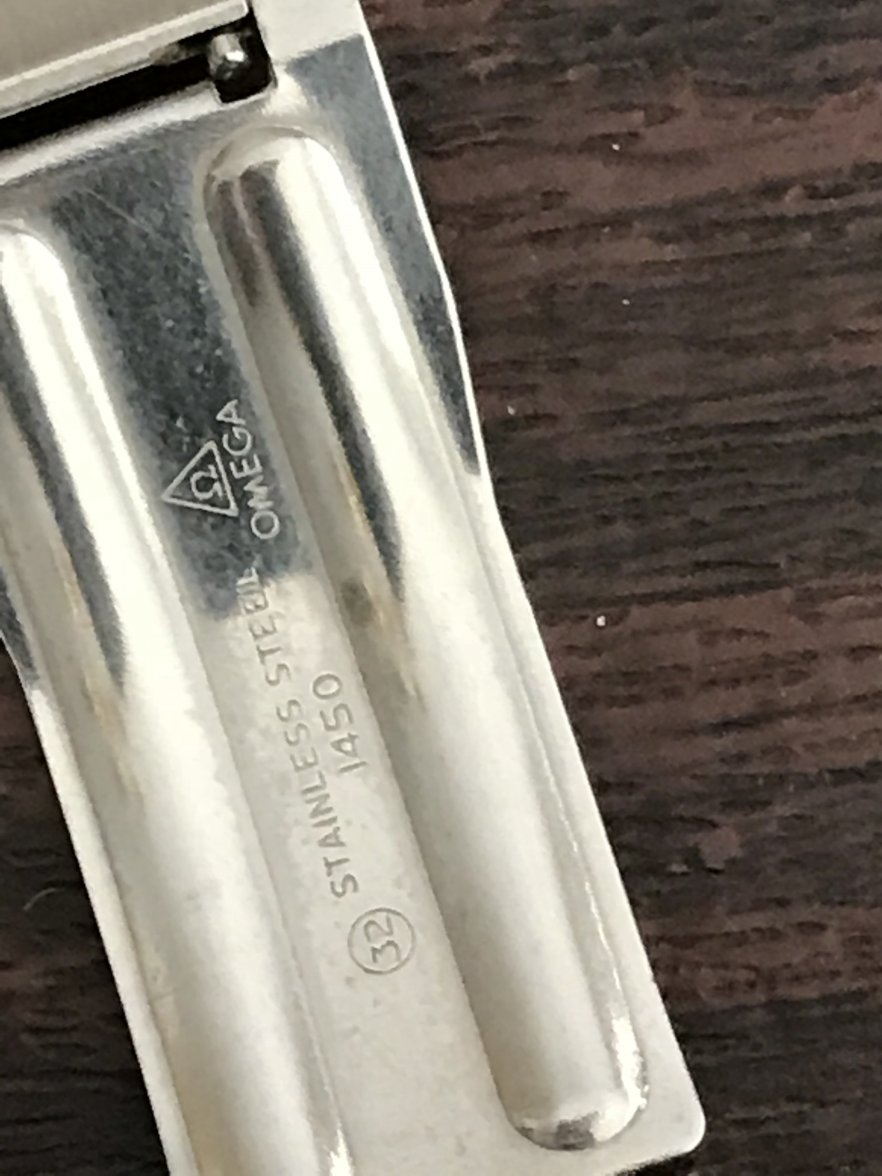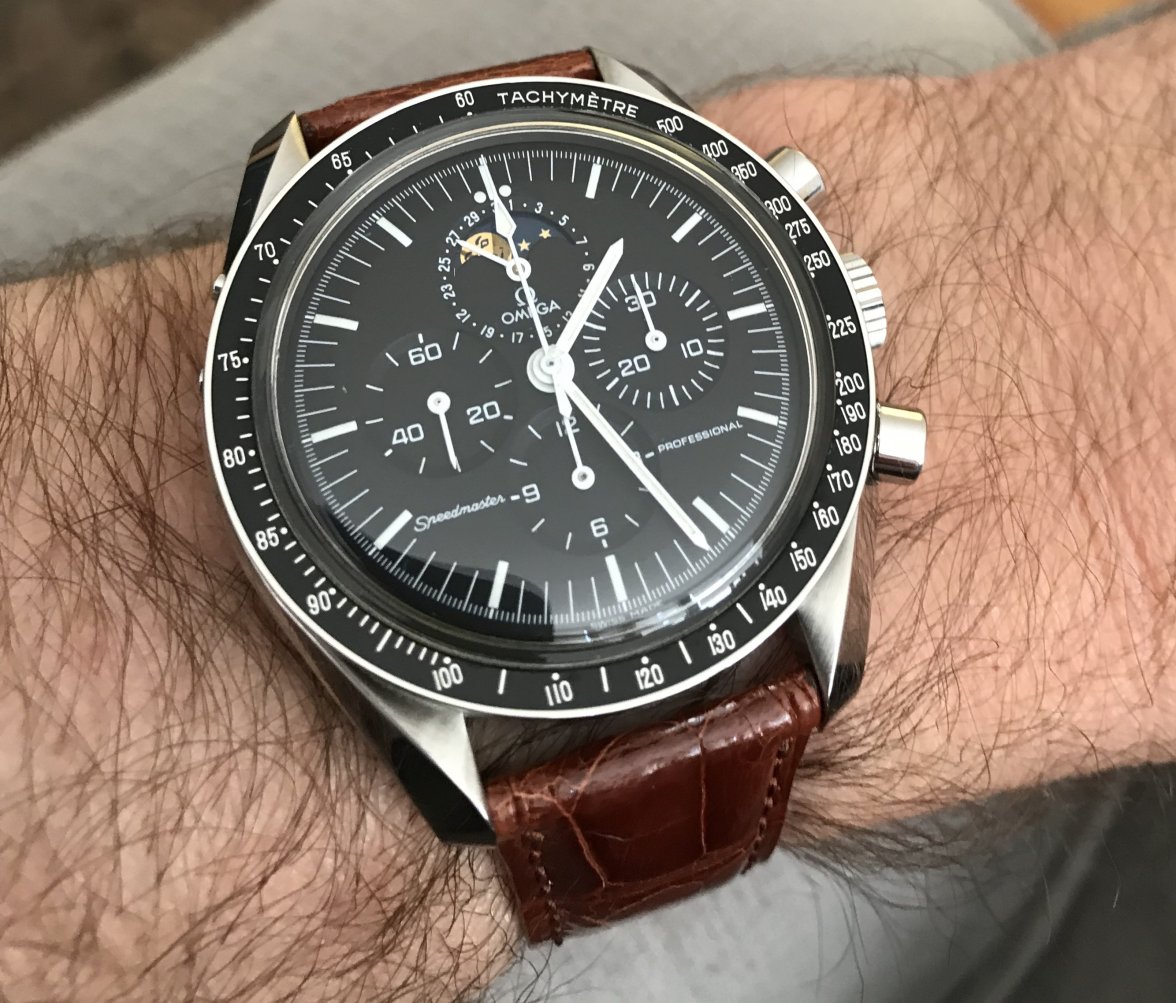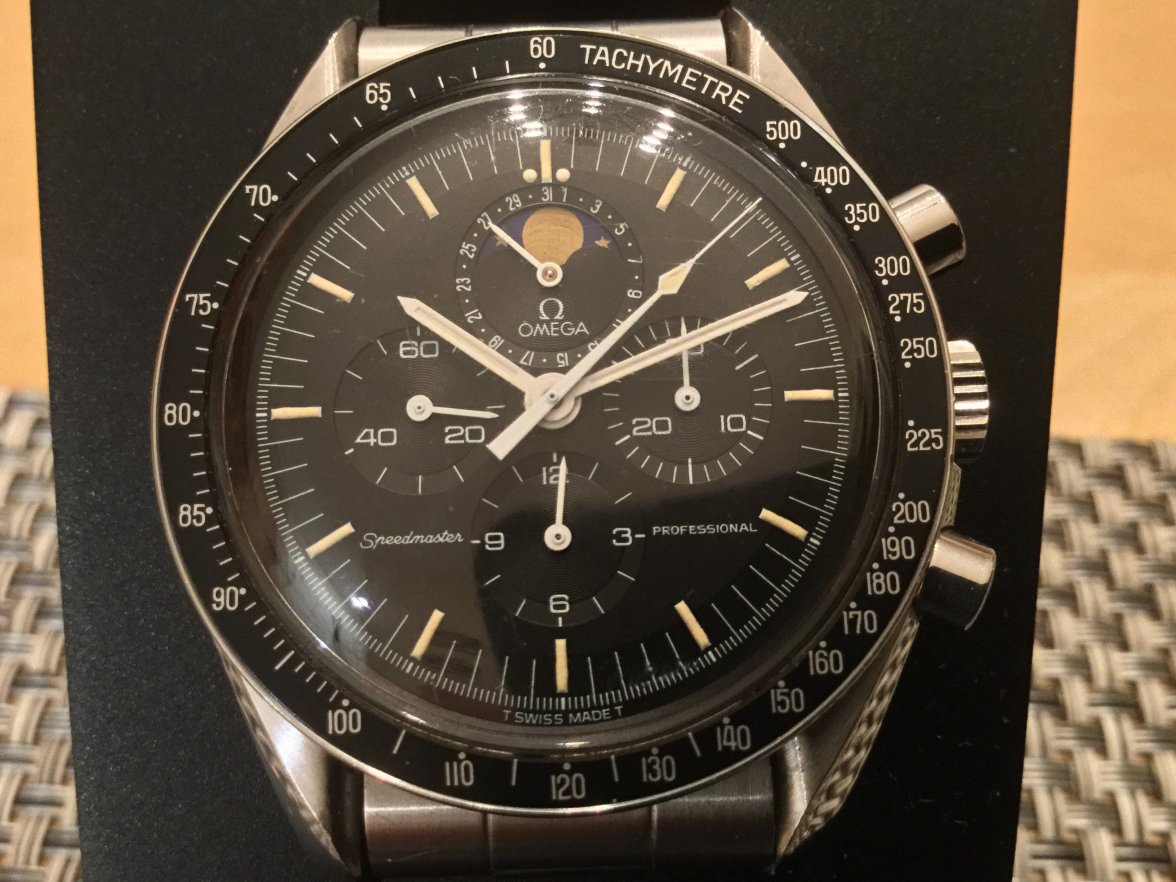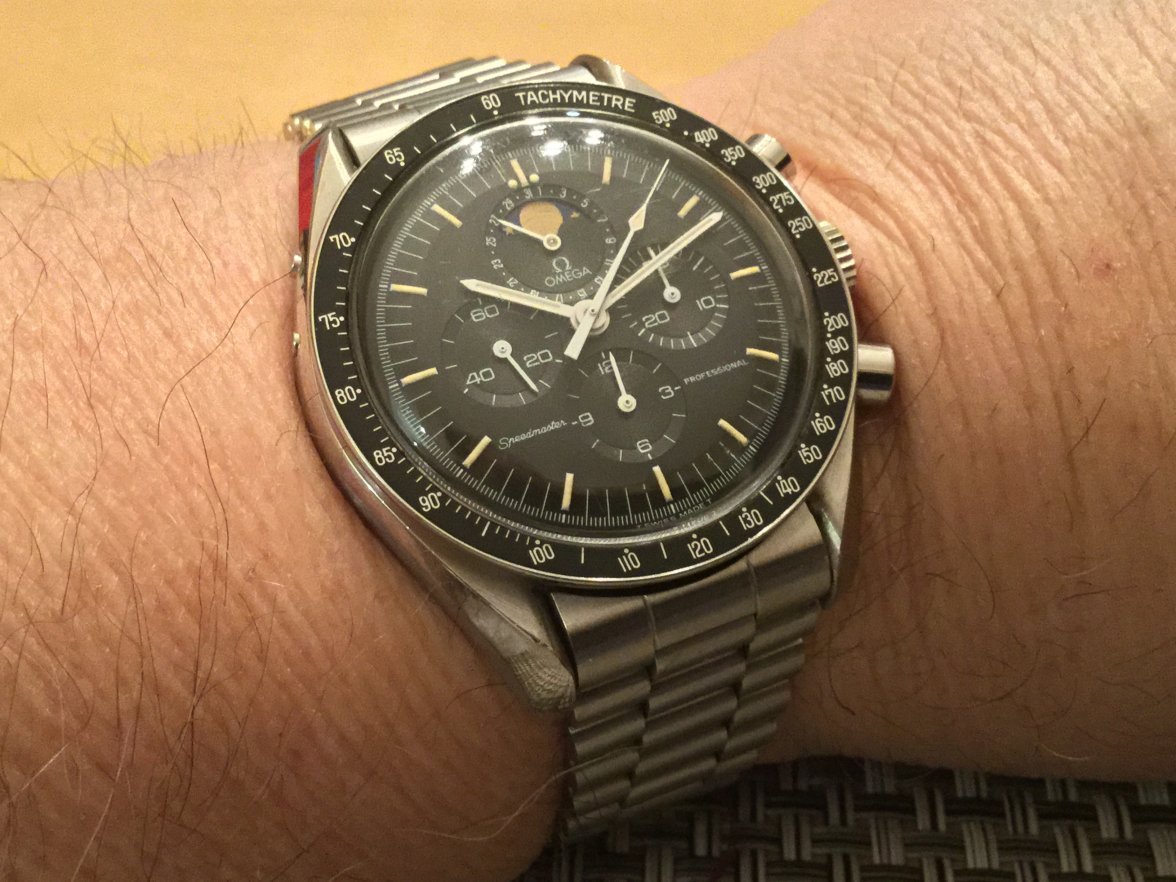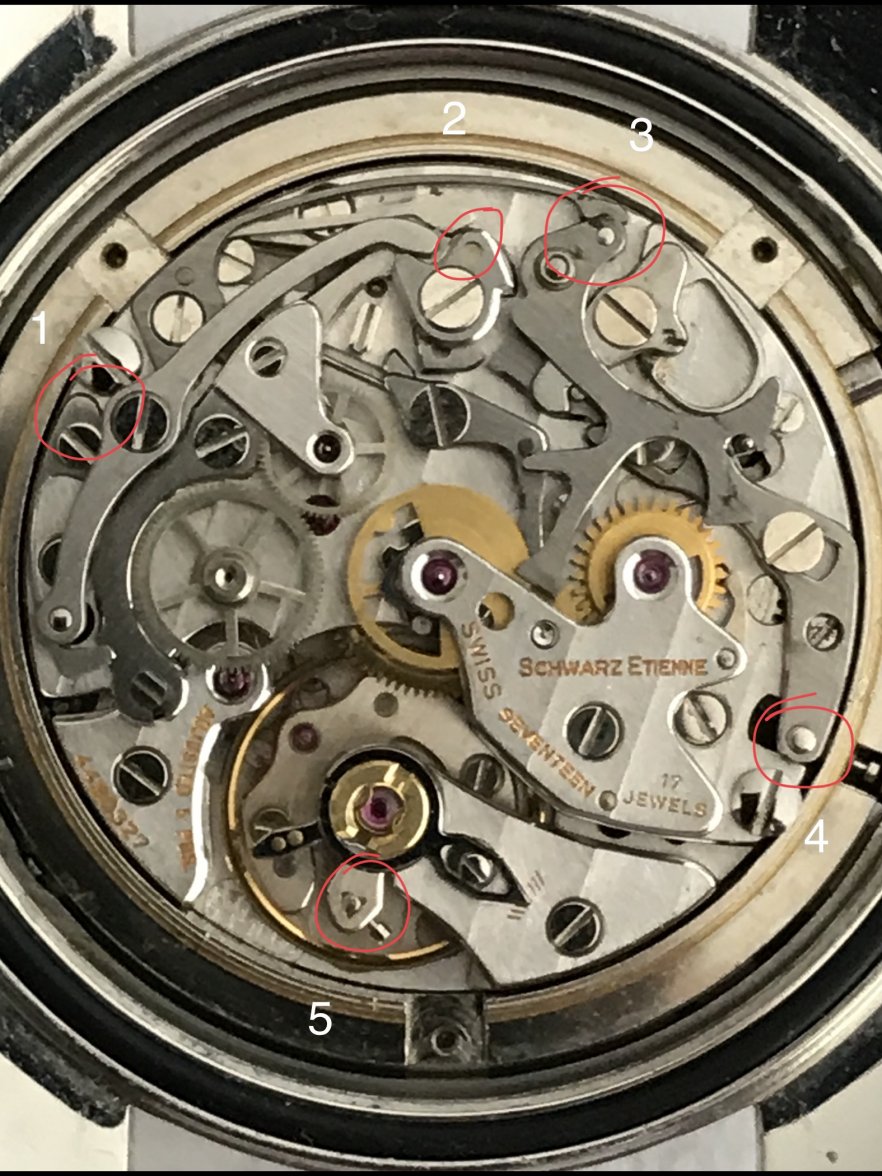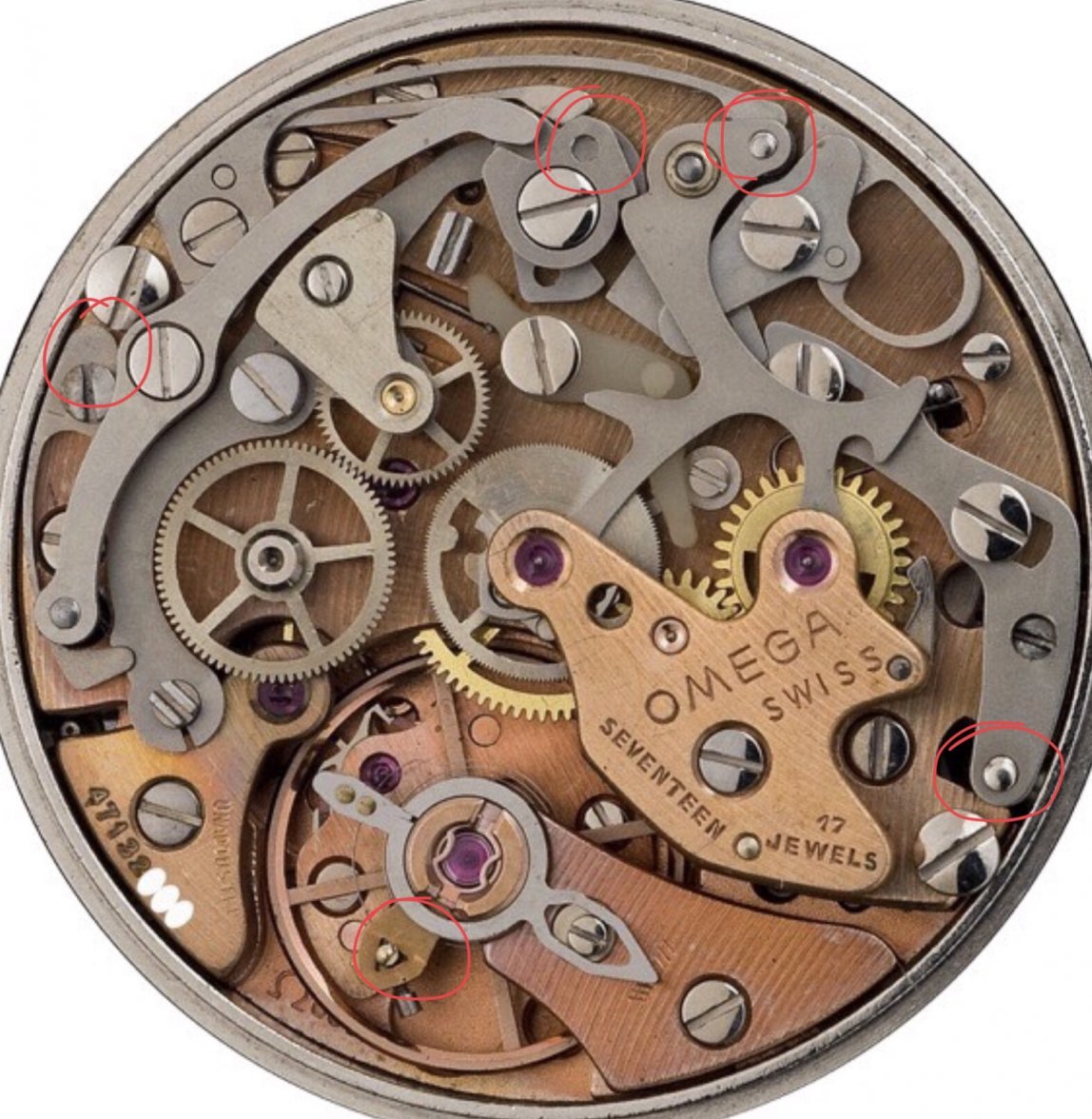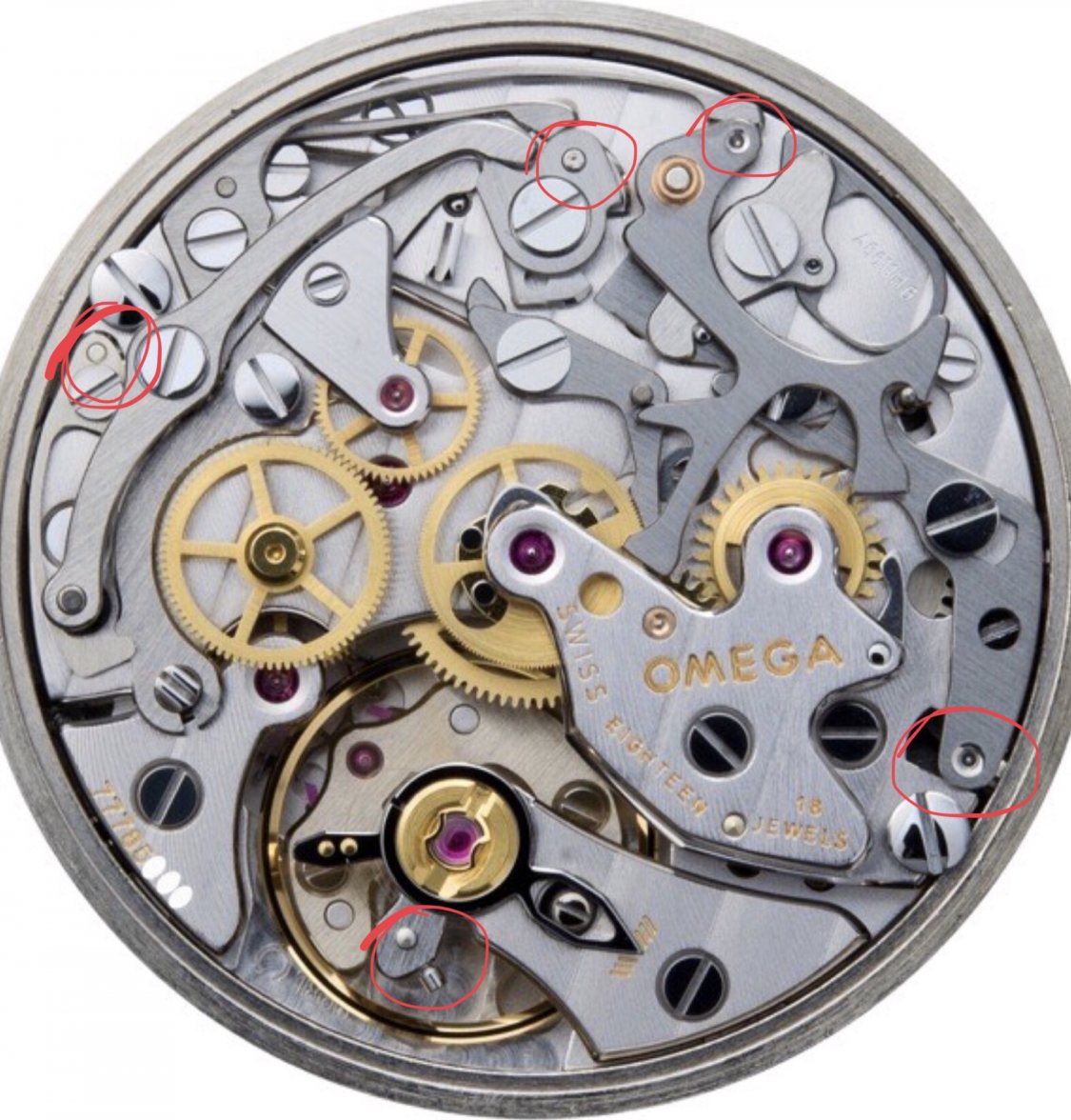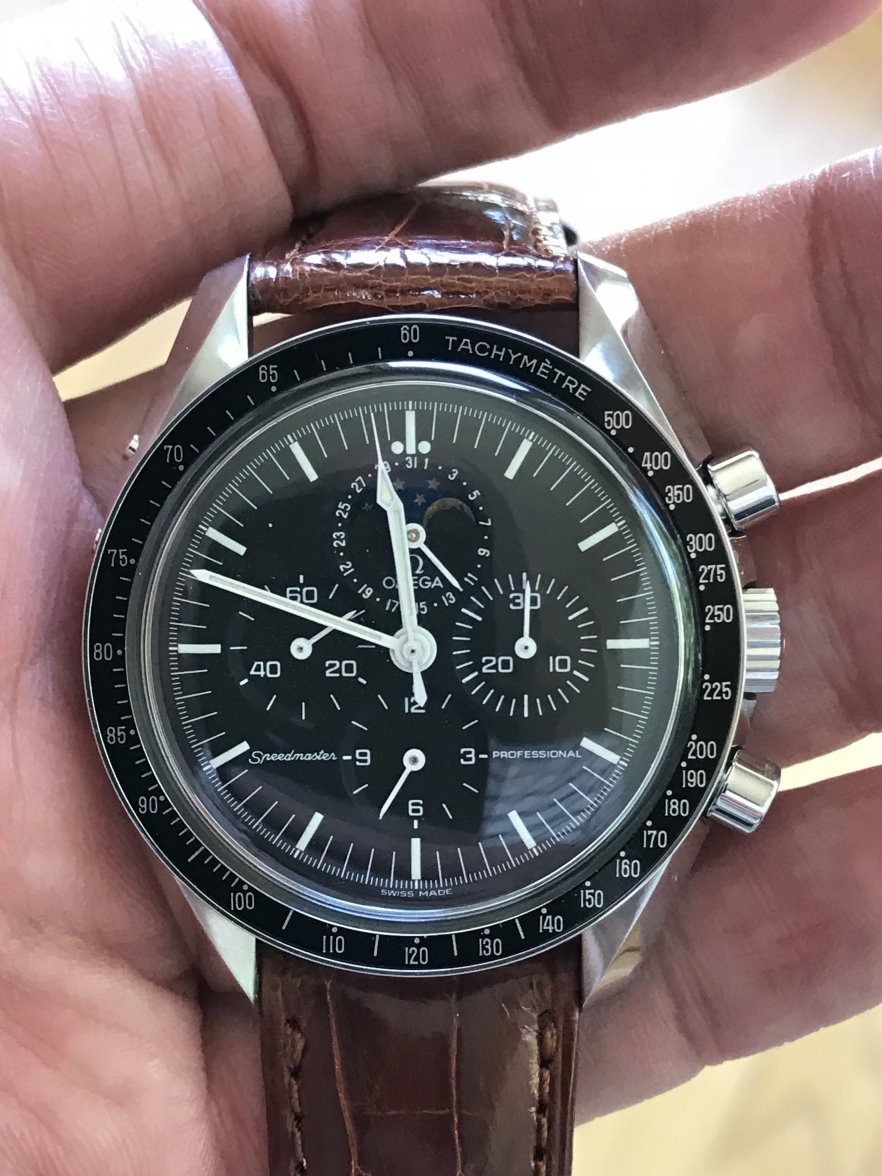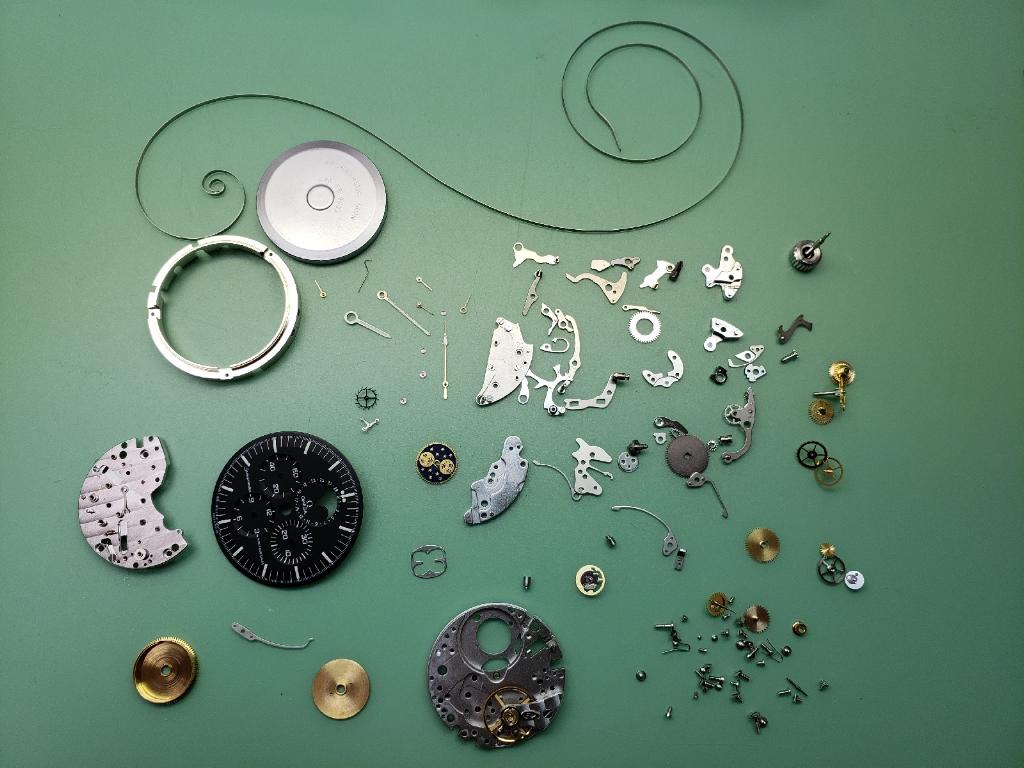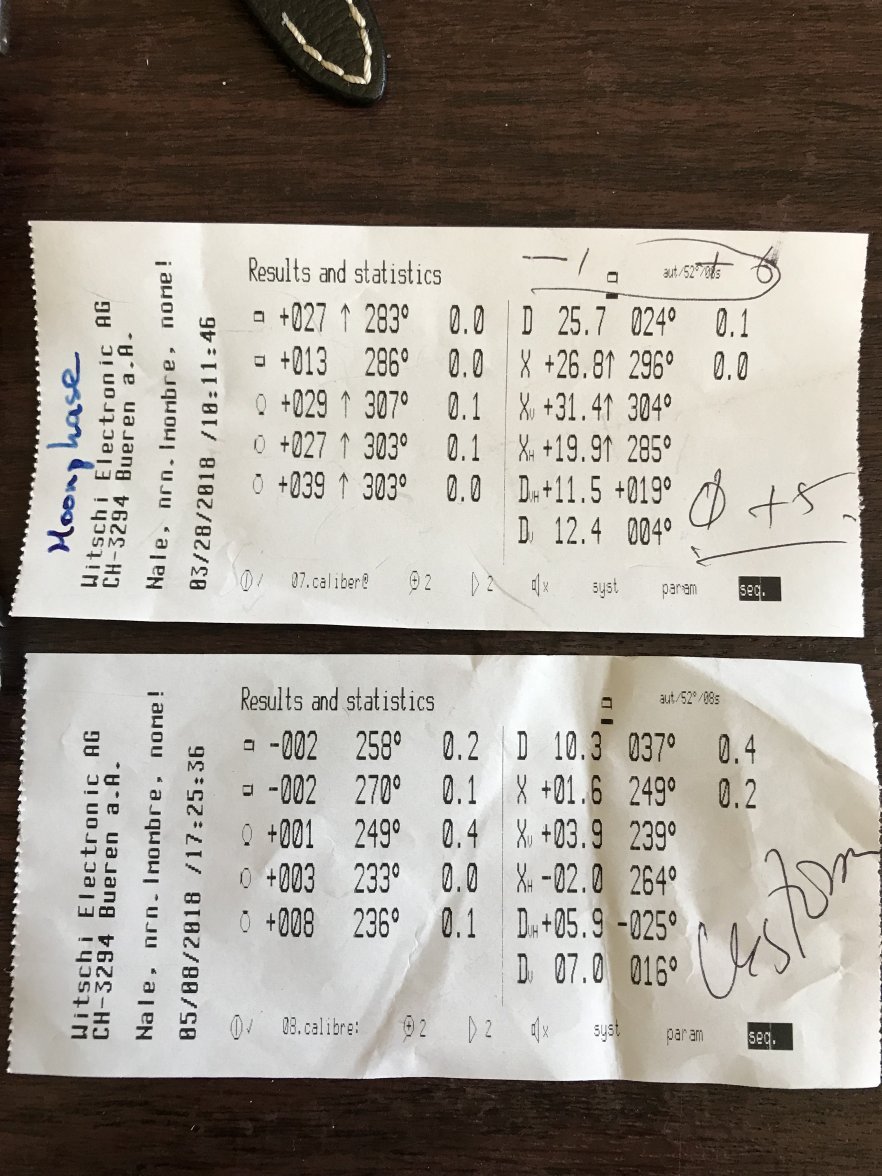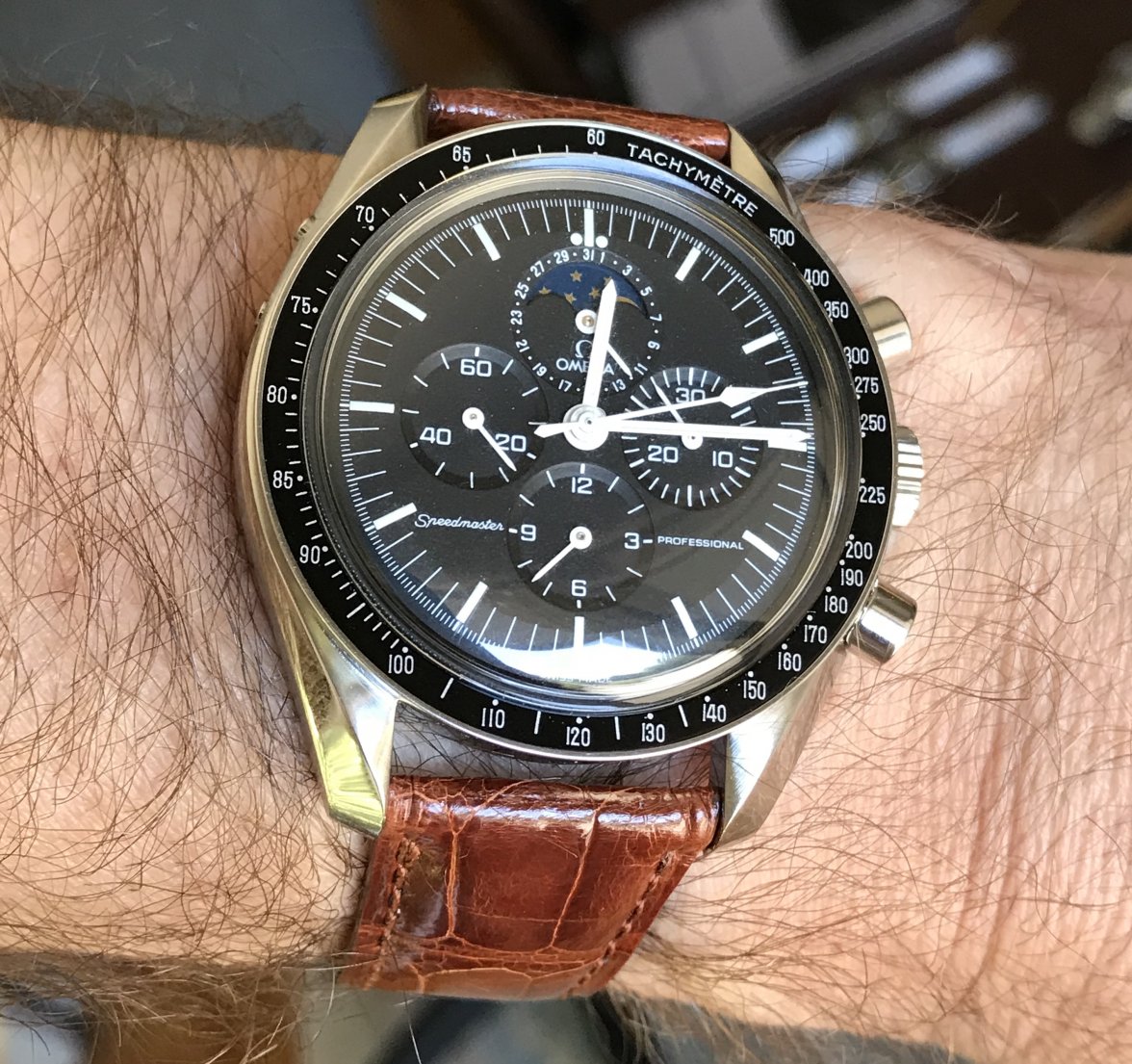airansun
·I bought a Lemania powered moonphase watch in an Omega case, with Omega hands and face, from an eBay seller in France. The sellers photos were less than ideal. But I could tell that the face was a luminova Omega black moonphase without metal rings around the subdials, a genuine service dial replacement from the late 80’s.
The movement was a Lemania moonphase that had been ‘tuned’ and adjusted by Schwartz Etienne. I understood that I was taking a risk.
On its way to me, the package ‘disappeared’ from all postal tracking, somewhere between leaving France and formally appearing in the US. Scheduled to arrive today, I received an email notice late this morning from USPS that the package was now scheduled to be delivered tomorrow. Forty five minutes later, a mailman showed up with the package.
He apologized to me repeatedly for the condition of the package. I admit I was heart broken. It looked like either the watch had been crushed or stolen from inside.
Damn! This couldn’t be worse, I thought. I was wrong.
As I stripped away the cardboard, I discovered that the inside packaging was wet, quite wet, although there was no sign of moisture on the outside of the package.
At this point, my heart was in my mouth.
I finally pulled it out.
It started running very easily.
The back cover was on horrendously tight, which explains both the damage to the inside back cover and the complete lack of any moisture inside.
Here’s an Omega 1866 movement for comparison
You can see all the differences between the modern face on the right and the service dial on the left.
An original Speedymoon dial would be in tritium and all the date numbers would face inward.
Oh, and my moon has a face, as did some Speedymoons but no subsequent Speedmaster Moonphases.
I separately found the proper band.
Finally, a group portrait of the family
(I haven’t been winding the white gold moonphase.)
I’ll bring it in for service shortly. In the meantime:
So far keeping good time.
Oh, and what’d it cost? USD 2975. I think I did okay. I also think I lucked out. To me anyway, an interesting piece.
So whadda you guys think?
The movement was a Lemania moonphase that had been ‘tuned’ and adjusted by Schwartz Etienne. I understood that I was taking a risk.
On its way to me, the package ‘disappeared’ from all postal tracking, somewhere between leaving France and formally appearing in the US. Scheduled to arrive today, I received an email notice late this morning from USPS that the package was now scheduled to be delivered tomorrow. Forty five minutes later, a mailman showed up with the package.
He apologized to me repeatedly for the condition of the package. I admit I was heart broken. It looked like either the watch had been crushed or stolen from inside.
Damn! This couldn’t be worse, I thought. I was wrong.
As I stripped away the cardboard, I discovered that the inside packaging was wet, quite wet, although there was no sign of moisture on the outside of the package.
At this point, my heart was in my mouth.
I finally pulled it out.
It started running very easily.
The back cover was on horrendously tight, which explains both the damage to the inside back cover and the complete lack of any moisture inside.
Here’s an Omega 1866 movement for comparison
You can see all the differences between the modern face on the right and the service dial on the left.
An original Speedymoon dial would be in tritium and all the date numbers would face inward.
Oh, and my moon has a face, as did some Speedymoons but no subsequent Speedmaster Moonphases.
I separately found the proper band.
Finally, a group portrait of the family
(I haven’t been winding the white gold moonphase.)
I’ll bring it in for service shortly. In the meantime:
So far keeping good time.
Oh, and what’d it cost? USD 2975. I think I did okay. I also think I lucked out. To me anyway, an interesting piece.
So whadda you guys think?
Edited:

